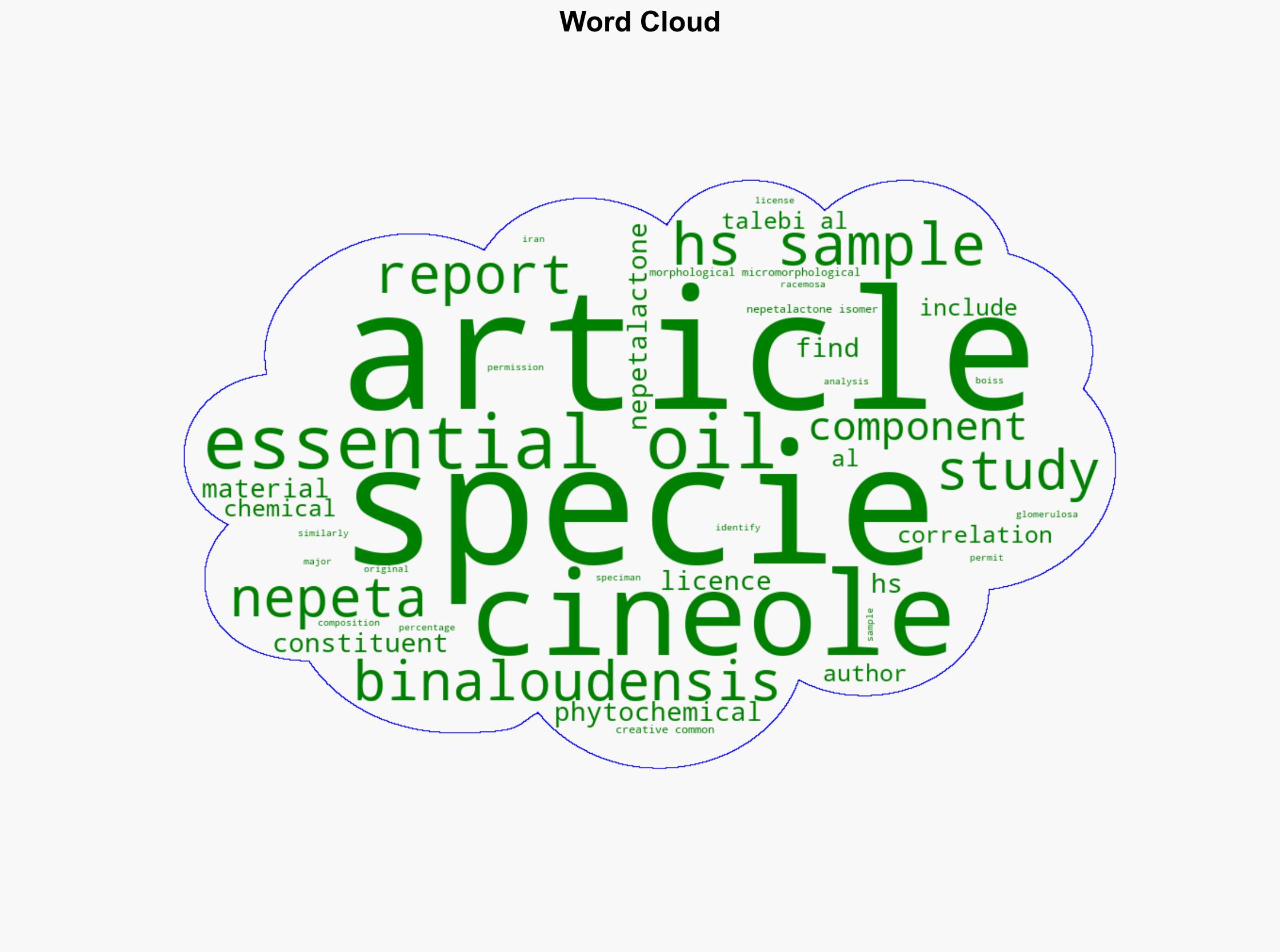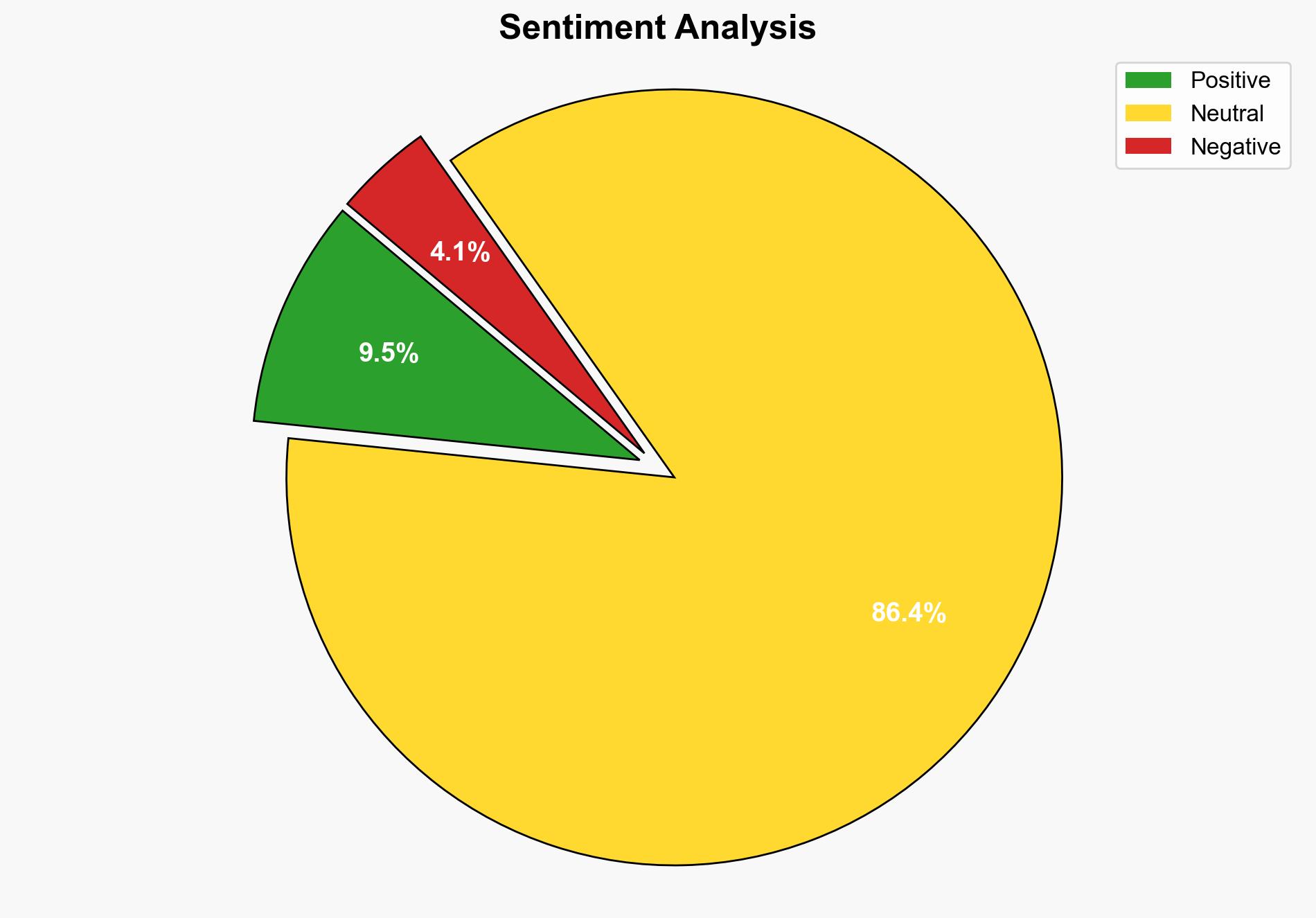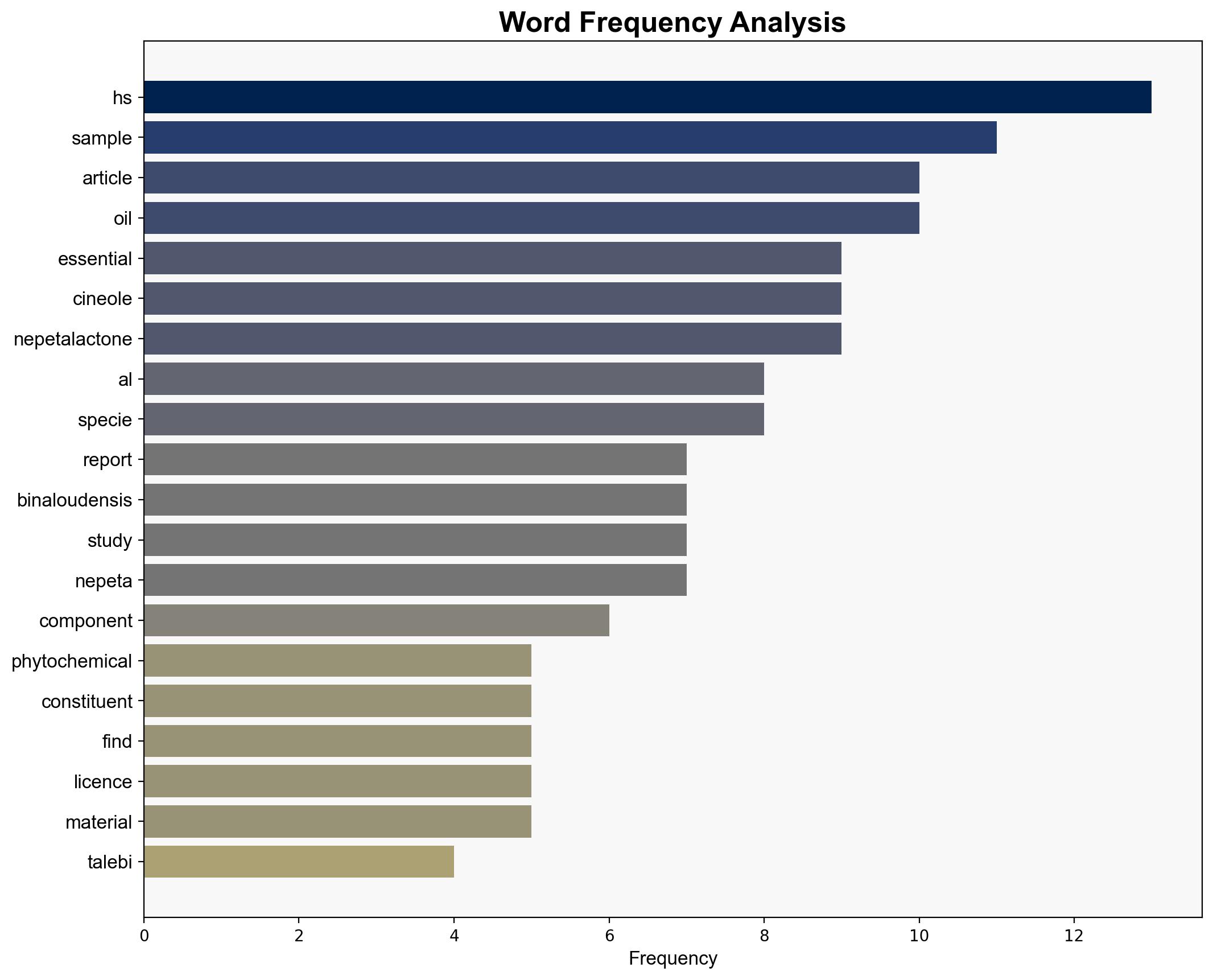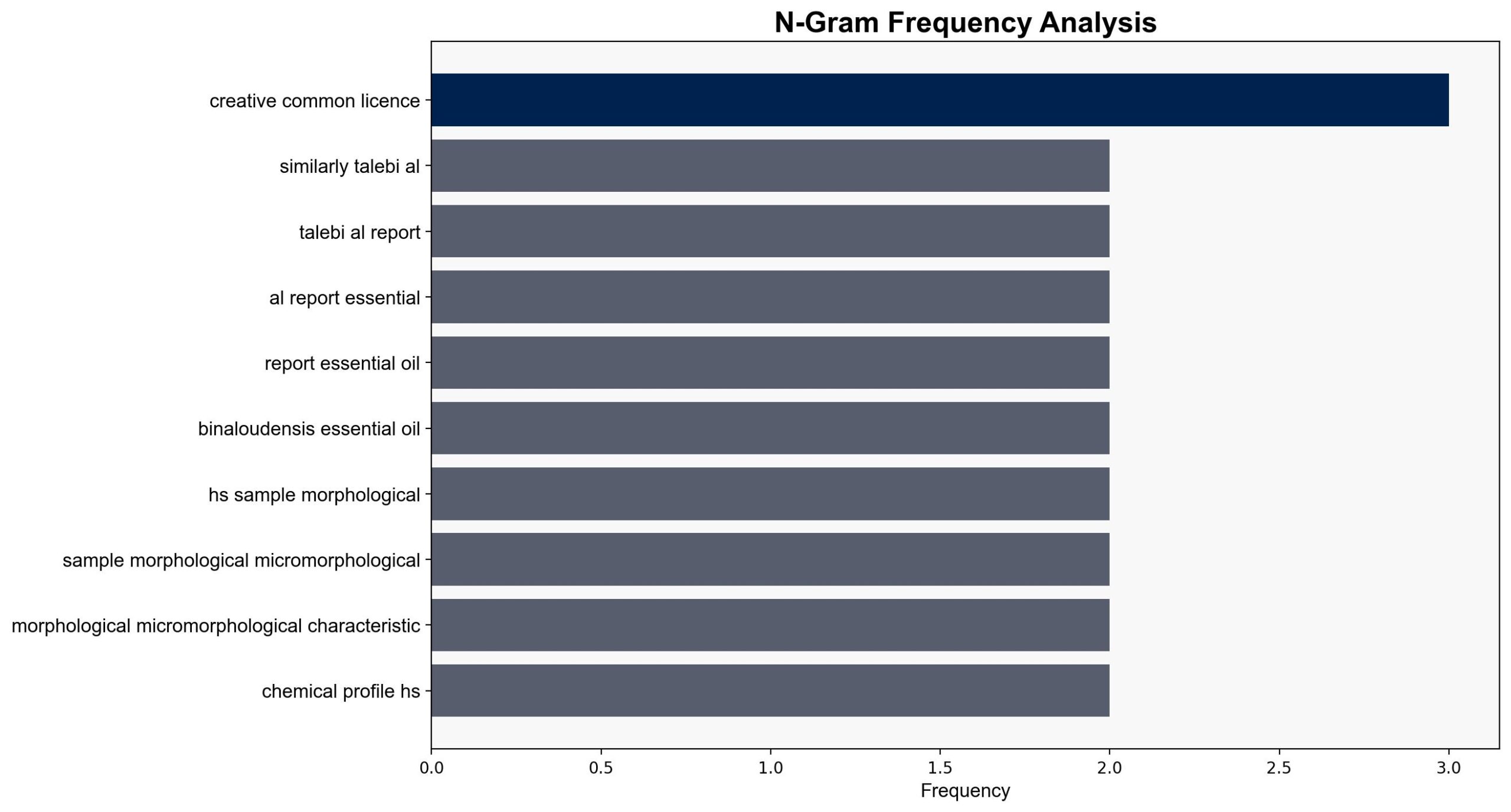Correction Phytochemical and morphometric authentication of medicinal plants marketed as Ostokhudus in Iran – Nature.com
Published on: 2025-10-09
Intelligence Report: Correction Phytochemical and Morphometric Authentication of Medicinal Plants Marketed as Ostokhudus in Iran – Nature.com
1. BLUF (Bottom Line Up Front)
The most supported hypothesis is that the variability in the chemical composition of the essential oils from the Nepeta species, specifically Binaloudensis, is primarily due to environmental factors rather than misidentification of species. Confidence in this hypothesis is moderate. It is recommended to conduct further controlled studies to isolate environmental variables and verify species identification through genetic analysis.
2. Competing Hypotheses
1. **Hypothesis 1**: The variability in the chemical composition of Binaloudensis essential oils is primarily due to environmental factors such as altitude, temperature, and precipitation.
2. **Hypothesis 2**: The observed variability is due to misidentification of the plant species, leading to incorrect attribution of chemical profiles.
Using the Analysis of Competing Hypotheses (ACH) 2.0, Hypothesis 1 is better supported by the evidence of environmental impact on chemical composition, as noted in multiple studies cited in the source. Hypothesis 2 lacks strong evidence, as morphological and micromorphological characteristics align with the expected profiles for Binaloudensis.
3. Key Assumptions and Red Flags
– **Assumptions**: It is assumed that the environmental data (temperature, altitude, etc.) are accurately measured and relevant to the chemical profiles observed.
– **Red Flags**: Potential misidentification of species could skew results, as could unreported variations in cultivation or harvesting methods.
– **Blind Spots**: Lack of genetic analysis to confirm species identity is a significant gap.
4. Implications and Strategic Risks
The variability in essential oil composition could impact the reliability of these plants in traditional medicine, potentially affecting consumer trust and market stability. If misidentification is prevalent, it could lead to regulatory challenges and economic losses. Furthermore, environmental changes could further alter chemical profiles, affecting supply chains.
5. Recommendations and Outlook
- Conduct genetic analyses to confirm species identity and reduce the risk of misidentification.
- Implement controlled studies to isolate and understand the impact of specific environmental factors on chemical composition.
- Scenario Projections:
- **Best Case**: Accurate identification and understanding of environmental impacts lead to improved product reliability and market stability.
- **Worst Case**: Continued misidentification and environmental degradation lead to significant economic and reputational losses.
- **Most Likely**: Incremental improvements in identification and environmental understanding stabilize the market over time.
6. Key Individuals and Entities
– Talebi et al.
– Mohammadpour et al.
– Rustaiyan and Nadji
– Hashemi Moghaddam et al.
7. Thematic Tags
phytochemical analysis, environmental impact, species identification, traditional medicine, market stability





